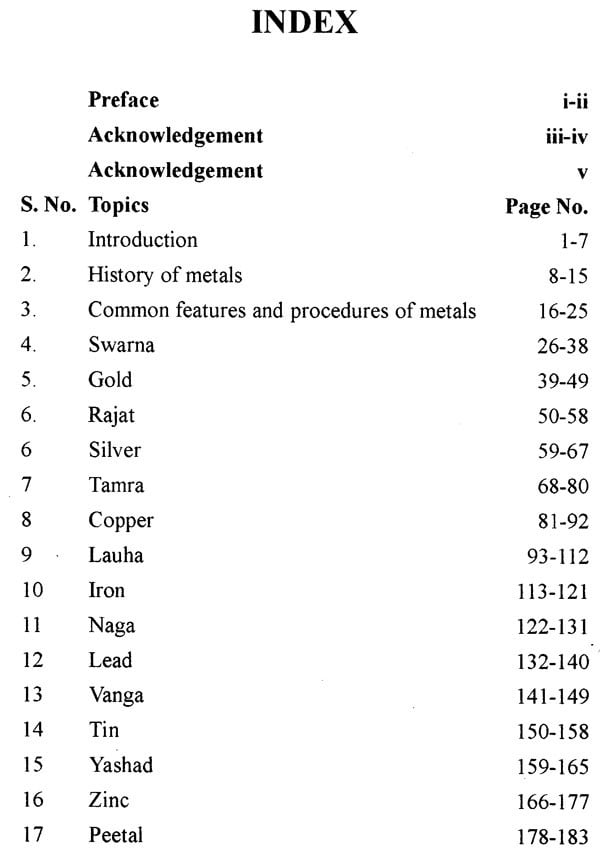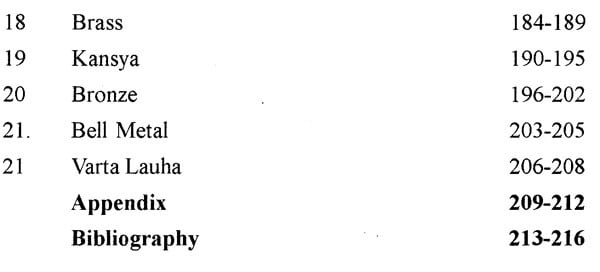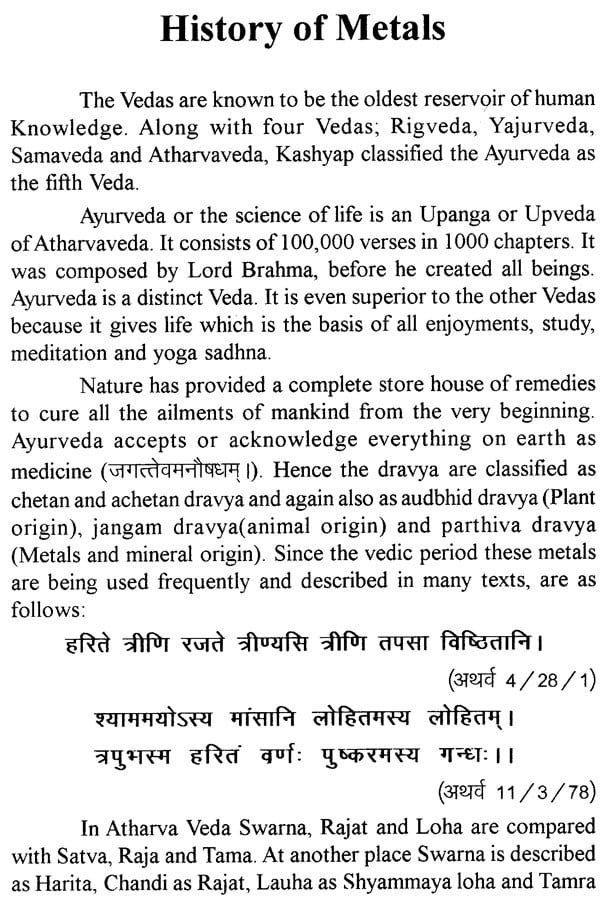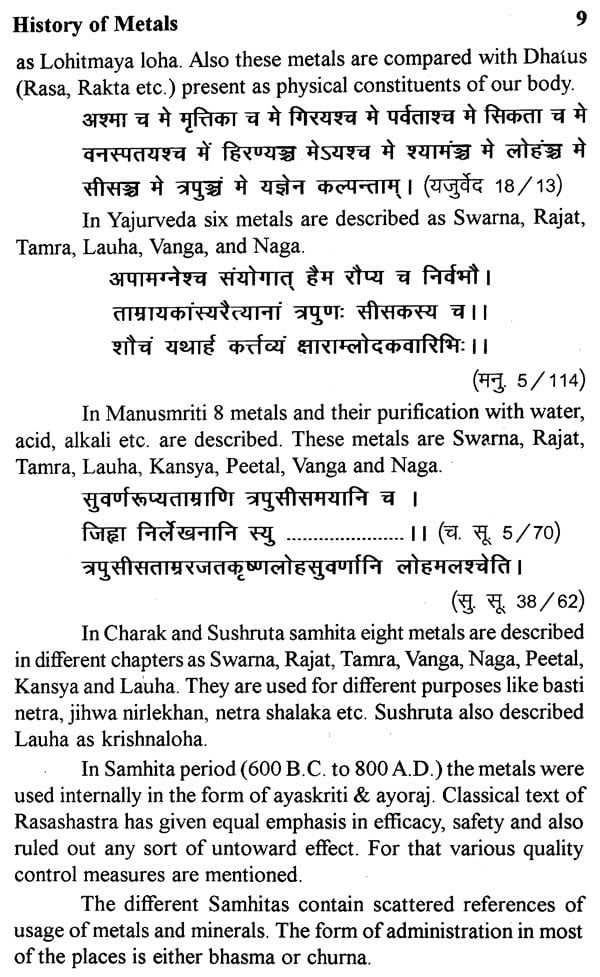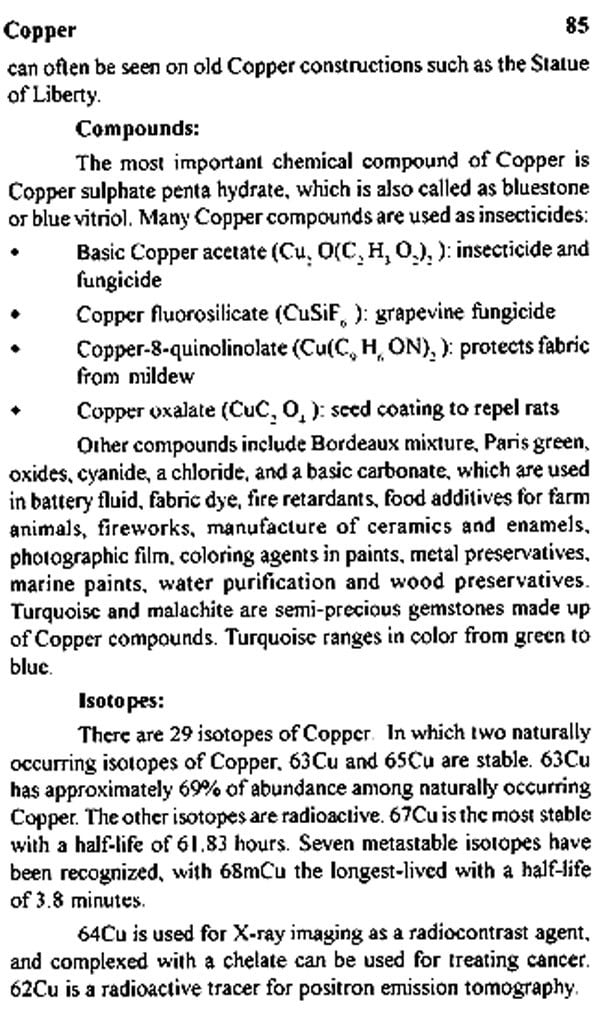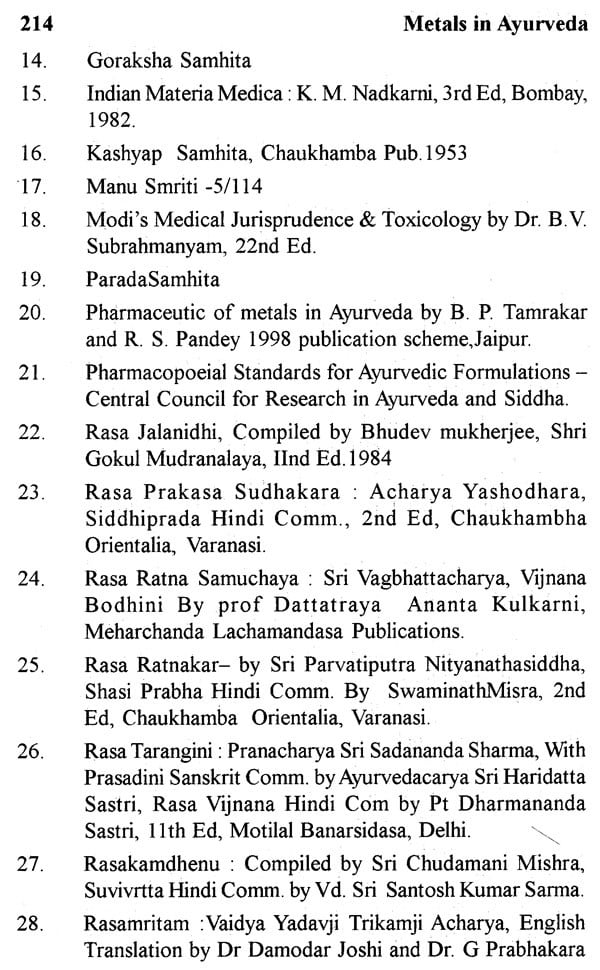
Metals in Ayurveda
Book Specification
| Item Code: | NBZ959 |
| Author: | Amit Sinha and Nitin Urmaliya |
| Publisher: | Ayurved Sanskrit Hindi Pustak Bhandar, Jaipur |
| Language: | Sanskrit Text with English Translation |
| Edition: | 2016 |
| ISBN: | 9788192789699 |
| Pages: | 218 |
| Cover: | PAPERBACK |
| Other Details | 8.50 X 5.50 inches |
| Weight | 250 gm |
Book Description
"All substances are poisonous; there is none, that is not a poison.
The right dose differentiates a poison and a remedy." (Paracelsus 1493-1541)
According to it, there are two types of doses: Therapeutic and Lethal dose. There is a lot of hue and cry in the global scenario about the toxicity of heavy metals and some minerals. Since remote past we are using different Metals and Minerals for medicinal purposes defined in Ayurveda classics, but these Metals and Minerals are subjected to many processes before using in medicaments. It is believed that these processes make the medicines safe and harmless. In other words, Man mastered the art of using poisons as medicines through ages of research and observation.
This book is designed to provide a deep and essential knowledge in Metals. The subject matter has been dealt with concisely that is easy to grasp and simplified in presentation and wherever necessary tables and points have been inserted to help the scholars. The aim is to provide reasonable coverage of the subject Metals as a whole. Certain topics, such as Bronze, Brass etc. have also been dealt with in detail to understand the reader.
(1) Shalya: Surgery (2) Shalakya: diseases of eye, nose, mouth, ears etc. and their treatment (3) Kaya Chikitsa: general diseases of body and their treatment (4) Bhoot vidya: treatment of diseases caused by evil spirits/souls (5) Kumara Bhritya: it treats the diseases of children (6) Agada tantra: description and treatment of poisonous drugs (7) Rasayana: science of Rejuvenating the body (8) Bajikarana: aphrodisiac or science of acquiring virile strength.
According to Ayurveda, the definition of healthy body is, "a person should not only be free from physical ailments but also should be mentally happy and spiritually elevated". To achieve the above, Ayurveda enforces to follow the principles of Ahar (diet), Vihar (activity) & Aushadhi (medicines).
The last part i.e. Aushadhi comprises of three categories:
(1) Herbal Product
(2) Animal Product
(3) Metals & Minerals
To attain the happy & healthy life herbal products were extensively used in the classic age in all branches of Ayurveda. Metals & minerals were also used as a part of therapeutic agent but less frequently as compared to herbal drugs. As these metals, minerals & costly stones etc. has proved efficacy in attaining all three requirement viz. physical, mental & spiritual health, it became very popular among the physicians & this uninterrupted popularity of these magic metals gave birth to a new specialized branch in Ayurveda i.e. "Rasashastra".
Rasashastra is an Ayurvedic pharmaceutics, which deals with chiefly the drugs of metals & minerals origin, their varieties, characteristics, processing techniques, properties & their therapeutic doses. However, it also includes the drugs of plant and animal origin.
In Rasashastra there is description of various instruments used for the preparation of the medicines from the minerals & also for the extraction of metals from their Ores .Various devices like dolayantra, patanayantra, damruyantra, swedanayantra etc. have been described under yantras. The description of many combinations of various drug's, herbs useful for different procedures like satvapatana, metal extraction, purification & formulations of minerals is given in paribhasha and many other places.
The ancient chemist after classifying mercury as the 'rasa' after which, this branch has been named, classified the other metals, minerals & gems into dhatu, upadhatu, ratna, uparatna, maharasa, uparasa, sadharanarasas & sudha and sikta varga and also visha and upavisha varga later on.
Book's Contents and Sample Pages
